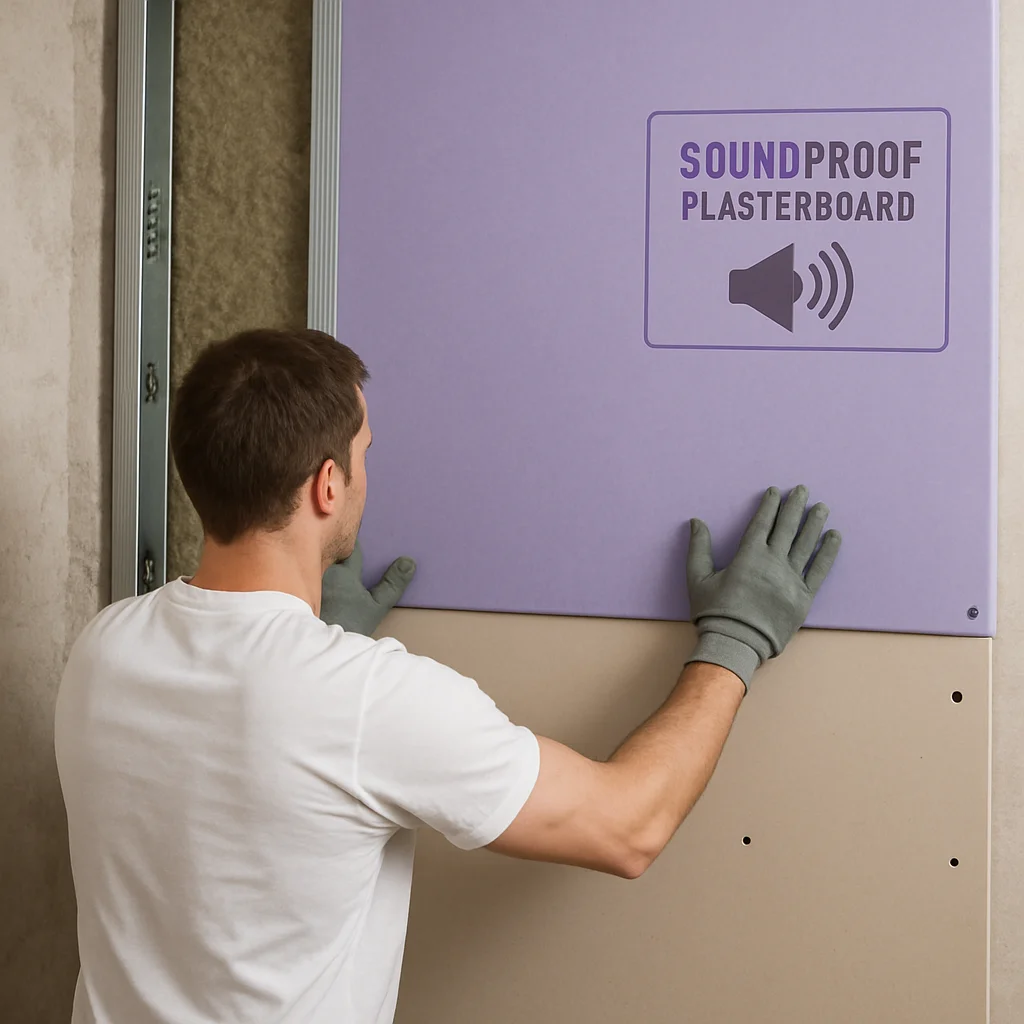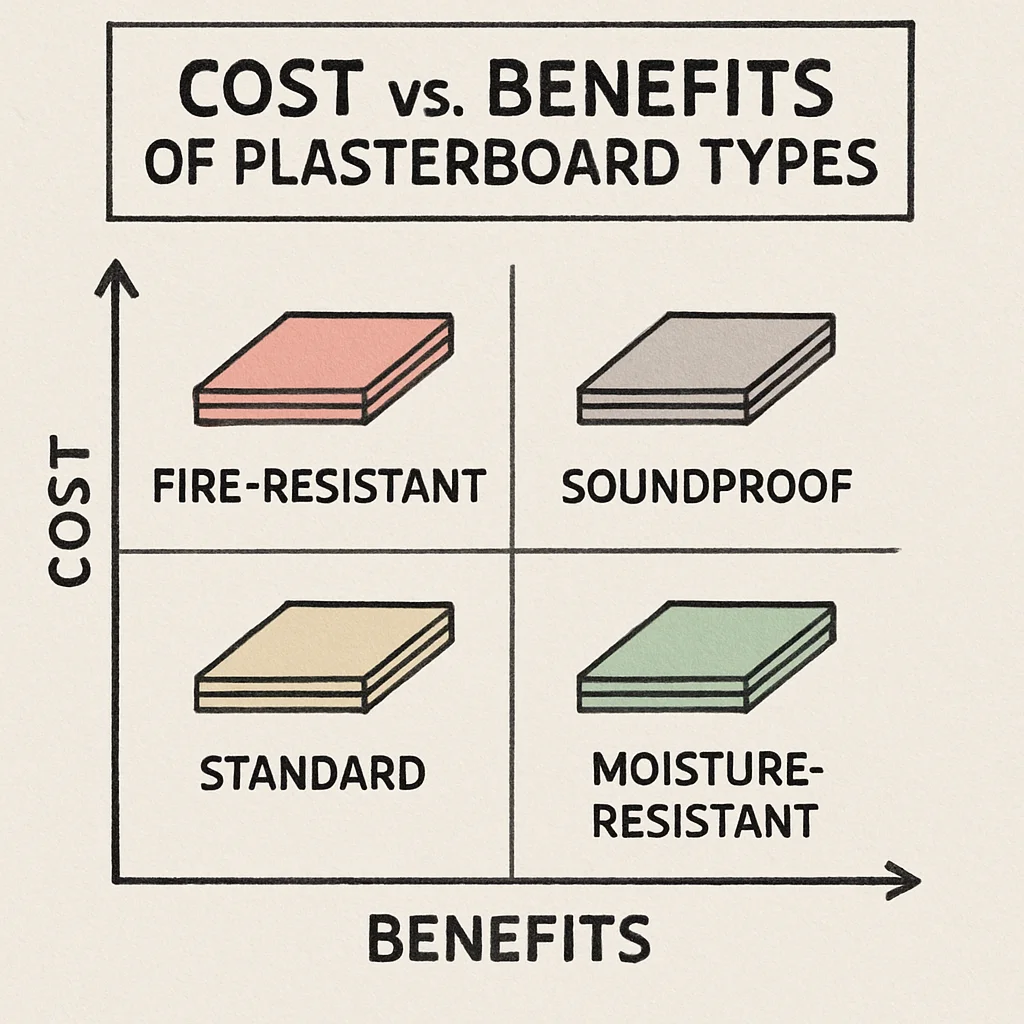In the world of construction and renovation, choosing the right plasterboard is essential. Whether you’re a contractor or a DIY enthusiast, understanding the different types of plasterboard and their specific applications can make a significant difference to the outcome of your project. In this deep dive, we’ll explore fire, acoustic, and moisture plasterboard types, and how they measure up against UK standards.
Plasterboard, also known as drywall, is a panel made of calcium sulphate dihydrate (gypsum) with or without additives, typically extruded between thick sheets of facer and backer paper. It is used to make interior walls and ceilings. The key is to select the right type for your specific needs, whether it be fire resistance, soundproofing, or moisture resistance.
Types of plasterboard
Fire-resistant plasterboard is designed to withstand high temperatures and slow the spread of fire. It contains glass fibres and other non-combustible materials that reinforce the board’s structure during a fire.
In buildings where fire safety is a priority, such as schools, hospitals, and office buildings, using fire-resistant plasterboard is crucial. It provides an additional layer of protection, allowing more time for evacuation and reducing the spread of fire.
According to UK building regulations, certain areas require the use of fire-resistant materials. The most common standard is the British Standard BS 476, which tests the fire resistance of building materials. Fire-resistant plasterboards are usually rated by the time they can withstand fire, such as 30, 60, or 120 minutes.
Acoustic plasterboard is designed to reduce sound transmission between rooms. It is denser than standard plasterboard, which helps in absorbing sound waves.
In environments where noise control is important, such as recording studios, home theatres, or shared accommodation, acoustic plasterboard is ideal. It improves privacy and reduces noise pollution, creating a more comfortable living or working environment.
The UK standards for sound insulation are outlined in Approved Document E of the Building Regulations. This document specifies the minimum sound insulation performance required in residential and commercial buildings. Acoustic plasterboards are tested for their ability to reduce airborne and impact sound transmission.

Moisture-Resistant Plasterboard
Moisture-resistant plasterboard is designed for use in areas with high humidity, such as bathrooms, kitchens, and utility rooms. It contains water-repellent additives that help prevent moisture absorption.
Why Choose Moisture-Resistant Plasterboard?
Moisture can damage standard plasterboard, leading to mould growth and structural issues. Moisture-resistant plasterboard provides a durable solution that maintains integrity in wet conditions, protecting your walls and ceilings from damage.
UK Standards for Moisture-Resistant Plasterboard
The UK building regulations do not specifically mandate the use of moisture-resistant plasterboard. However, it is recommended in areas exposed to high humidity. The performance of these boards is usually assessed by their ability to resist moisture penetration, which is crucial for maintaining hygiene and preventing mould.
Comparing the Types of Plasterboard
When it comes to selecting plasterboard, understanding the differences between fire-resistant, acoustic, and moisture-resistant types can guide you to the right choice for your project.
Key Considerations
Fire Resistance: Essential for safety in fire-prone areas.
Acoustic Performance: Important for soundproofing in noise-sensitive environments.
Moisture Resistance: Crucial for damp areas to prevent damage and health hazards.
Cost Considerations
While specialised plasterboards may be more expensive than standard options, their benefits can outweigh the initial costs, especially in preventing future repairs and ensuring safety and comfort.

Conclusion
Selecting the right type of plasterboard involves considering the specific needs of your space and the standards required by UK regulations.
Whether you need fire resistance, soundproofing, or moisture protection, understanding the properties and benefits of each type will help ensure the success of your building or renovation project.
By choosing the appropriate plasterboard, you can enhance the safety, comfort, and durability of your space, ensuring it meets both your functional requirements and regulatory standards.

